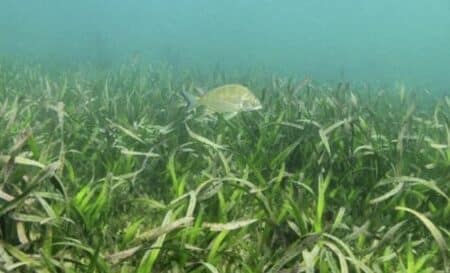Scientists from the University of Western Australia have discovered the world’s largest organism – a plant covering an area the size of Washington D.C.
Using genetic testing, researchers have determined that an underwater meadow stretching more than 180km in Shark Bay, Western Australia, is not comprised of multiple plant species as previously thought but is actually a single hybrid species comprising of Poseidon’s ribbon weed and another unknown species.
According to BBC’s Tiffanie Turnbull the discovery was stumbled upon by accident. The research team had travelled to the underwater meadow off Australia’s west coast in order to understand the genetic diversity of the ribbon weed.
Researchers collected samples of the weed from across the meadow hoping to find out how many individual plants it was made up of. This is done by creating a genetic fingerprint for each sample.
The study’s lead author, Jane Edgeloe, had this to say about the results:
‘The answer blew us away – there was just one! That’s it, just one plant has expanded over 180km in Shark Bay, making it the largest known plant on Earth.’
Further research showed that the single plant has 40 chromosomes instead of the typical 20. This has led scientists to theorise that the super-organism is actually a hybrid made up of two closely related species – Poseidon’s ribbon weed (Posidonia australis) and an unknown species.
The researchers estimate the age of the enormous plant at 4500 years old, judging by its growth rate and current size. If the estimate is correct that would make it one of the oldest organisms on Earth.
According to Elizabeth Sinclair, one of the researchers, for the plant to have survived and flourished for so long in such variable conditions it would need to be remarkably resilient.
The authors of the study note that the plant’s extra genetic material may be providing a way for it to deal with and adapt to adverse environmental stressors.
According to Elizabeth Pennisi, senior correspondent for Science, the plant is roughly 1.5 orders of magnitude larger than the largest fungi and longest sea animal, making it the largest organism on Earth.
The research was published in the journal Proceeding of the Royal Society B on Tuesday.

